Affiliate disclosure: This post may contain affiliate links. Please see our Privacy Policy.
Canning vegetables is a simple way to preserve vegetables right on the pantry shelf. Few people have a root cellar these days, and the freezer space is always limited, making canning the perfect answer to a bumper crop of garden vegetables.
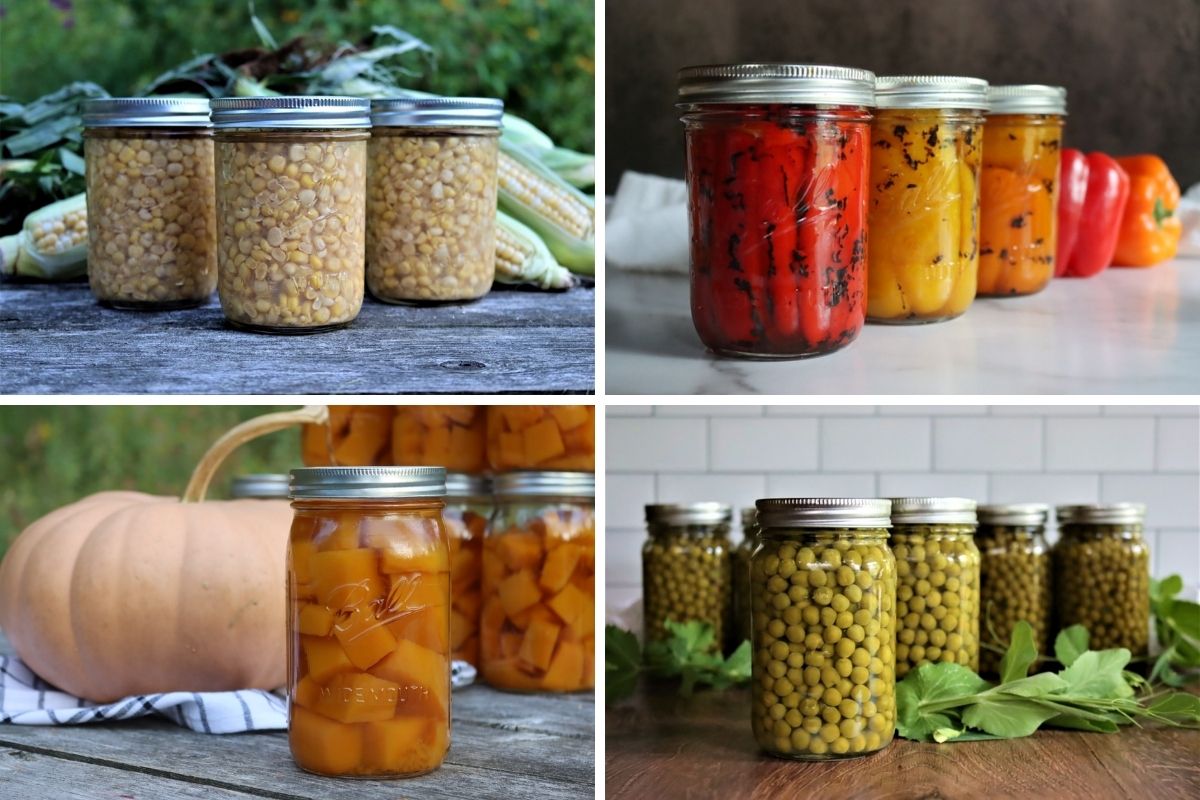
Table of Contents
- Vegetable Canning Recipes
- Asparagus
- Beets
- Cabbage
- Carrots
- Cauliflower
- Celery
- Corn
- Cucumbers
- Eggplant
- Fiddleheads
- Garlic
- Green Beans
- Greens (Spinach, Kale and Collards)
- Onions
- Parsnips
- Peas
- Peppers
- Potatoes
- Pumpkin (and Winter Squash)
- Ramps (Wild Leeks)
- Rhubarb
- Sweet Potato
- Tomatillo
- Tomatoes
- Turnips
- Zucchini
- Canning Recipes
- Food Preservation Tutorials
Long before canning, a whole winter’s worth of produce would have been stored in the root cellar, but that’s not exactly an option in most modern homes.
Freezing vegetables works well, but you’d need several large chest freezers (and a lot of electricity) to store a winter’s worth of vegetables. It’s not an entirely dependable method, and one power outage will destroy a year’s worth of work in the garden.
Canning vegetables at home means that you can preserve your garden harvest right on the pantry shelf, ready for quick weeknight meals at a moment’s notice. It’s not vulnerable to power outages, and it’s not taking up valuable freezer space.
Pressure Canning or Water Bath Canning
Most vegetables are “low acid” which means they’re not acidic enough for water bath canning. Almost all of them need to be pressure canned if you’re going to preserve them safely.
There are a number of water bath canning recipes for vegetables, but most are pickles and relishes.
For each vegetable, I’ve tried to provide both pressure canning recipes and water bath canning options.
Know that pressure canning vegetables will give you much more versatile canned goods since they can be preserved in plain water. For example, there are a lot more ways to use plain canned corn from the pressure canner than there are to use corn relish from a water bath canning recipe.
If you’re not familiar with pressure canning, I’d suggest reading this beginner’s guide to pressure canning before you get started.
If you’re new to canning altogether and just dipping your toe into the wonderful world of food preservation, I’d also suggest this beginner’s guide to water bath canning.
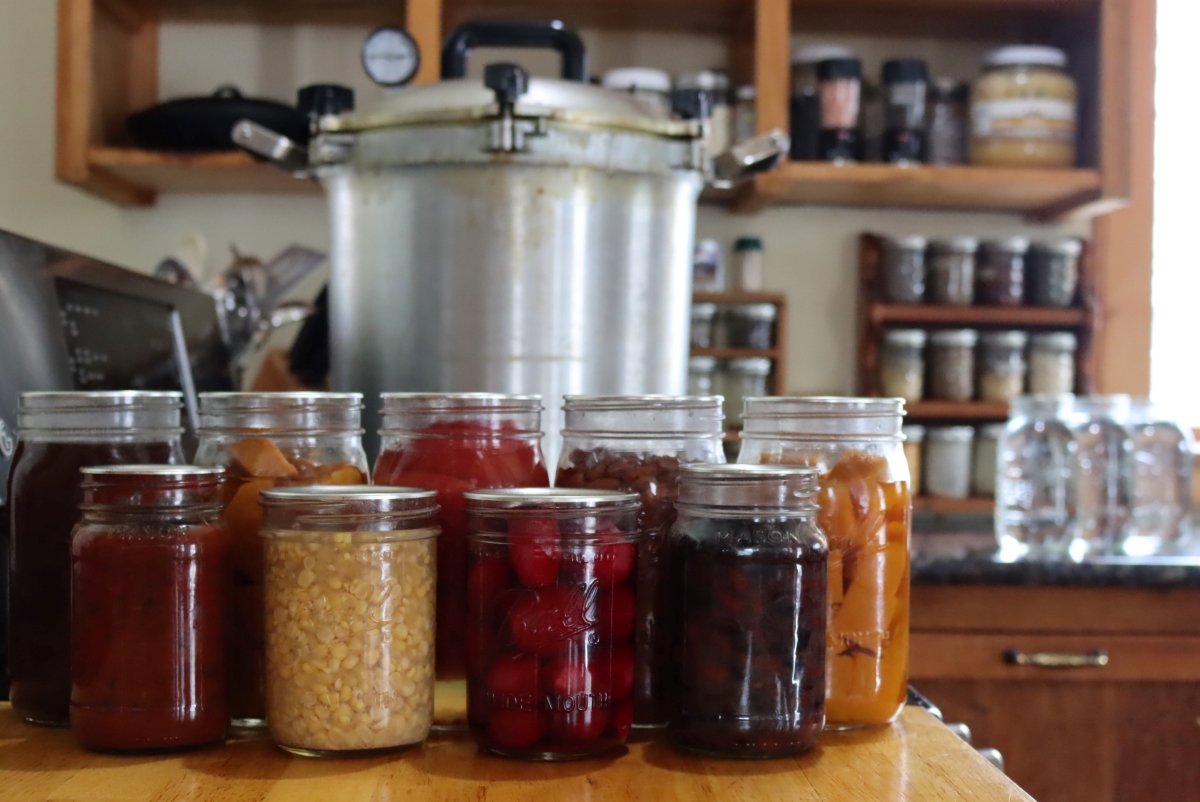
Vegetable Canning Recipes
I’ve sorted every vegetable canning recipe I can find into a convenient list, organized by vegetable type. If I’ve missed any, please do let me know in the comments so I can add your favorite vegetables to the list.
This includes both pressure canning recipes and water bath canning recipes with added acidity like relish, pickles, and jams.
All the vegetable canning recipes included below are safe canning recipes that use the most recent guidance from the national center for food preservation.
Asparagus
One of the trickiest vegetables to preserve, asparagus really is at its best fresh and in season. The second best, in my opinion, is home-canned asparagus.
I think asparagus cans considerably better than it freezes, and I often find it stringy when defrosted. Similarly, dehydrating will work in a pinch, but that’s only good for use in soups/stews. That said, asparagus really shines as a side dish, or in simple egg dishes, not stews.
Pickled asparagus is absolutely delicious, and I use it on sandwiches instead of cucumber pickles. It’s more of a condiment though, as all pickles are. If you want to eat any quantity of asparagus, opt to pressure can plain asparagus in water.
- Pickled Asparagus – Pressure Canning Recipe
- Canned Asparagus Spears – Water Bath Canning Recipe
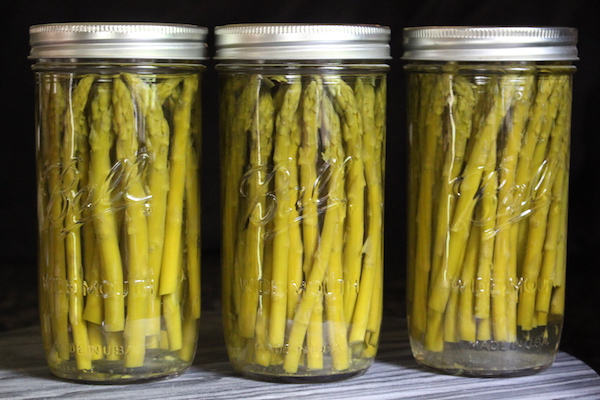
Beets
Home-canned beets are a real treat in the winter, and I’ll eat them right out of the jar. Even better is drained and then sprinkled with a bit of balsamic and a pinch of salt.
Pressure canned in plain water, they’re incredibly flavorful and versatile. They can be used as a side dish, as I’ve just described, or incorporated into a meal as cooked beets would be (like in beet soup), or simply added to salads.
Pickled beets are some of the best pickles, and they’re usually made with warm pickling spices (cloves, cinnamon, etc) and a good bit of sugar. That gives you a warm pickle with a sweet/sour flavor profile that’s perfect alongside heavy winter dishes.
We especially loved pickled beets alongside potato latkes (similar to hash brown patties).
- Canning Beets – Pressure Canning Recipe
- Pickled Beets – Water Bath Canning Recipe
- Pickled Golden Beets – Water Bath Canning Recipe
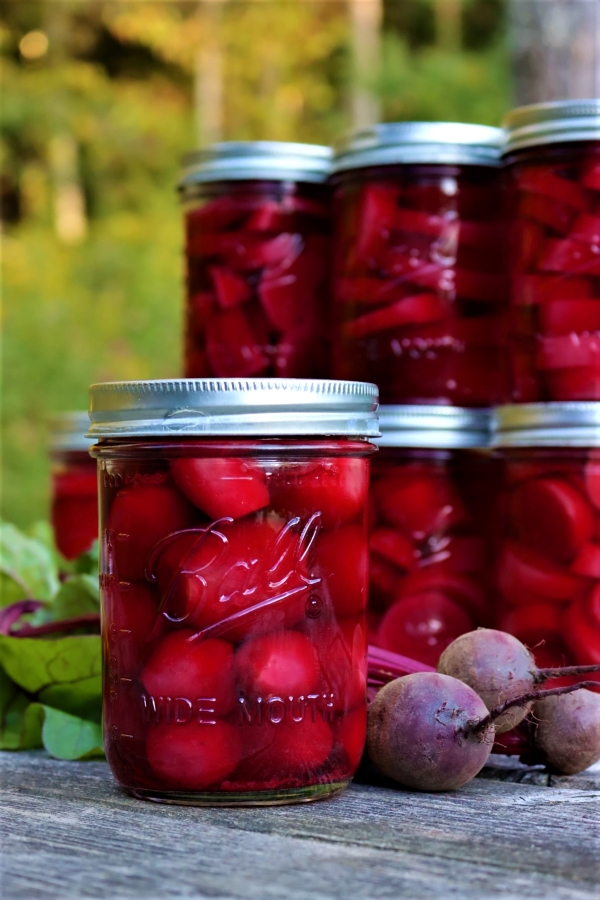
Cabbage
Unfortunately, there’s no tested recipe for canning plain cabbage, and it’s not recommended as an ingredient in pressure canned soups. Healthy Canning has a really good write-up on Canning Cabbage that explains why, and for the most part, it comes down to quality.
When you can plain cabbage it just tastes so horrible that the national center for food preservation hasn’t bothered testing it. Since it’s a low acid vegetable, it’d have to be a pressure canning recipe and cook for a long time.
That said, there are approved recipes for canning sauerkraut. The fermentation process for natural sauerkraut actually pickles the cabbage, meaning that it can be canned in a quick water bath.
Believe it or not, it’s actually quite good, and it works well in places where the sauerkraut is going to be cooked anyway. For example, Eastern European sauerkraut soup recipes.
No, it’s not still probiotic after canning, but it’s not still probiotic after cooking in soup either, so it’s a good way to preserve cabbage in warmer climates where there’s no good option for a root cellar and Lacto-fermented vegetables just don’t last that long.
- How to Can Sauerkraut – Water Bath Canning Recipe (or Pressure Canning)
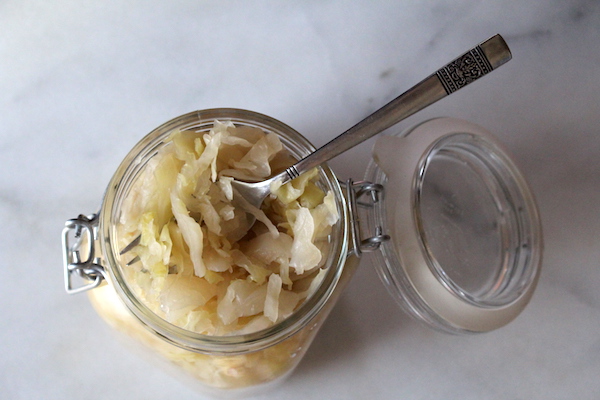
Carrots
We always have trouble storing carrots in our root cellar. It’s just not humid enough, and they always spoil quickly. (Potatoes, onions, and garlic do great there, since they like dryer storage, so you just can’t have it all.)
I do overwinter carrots in the garden, and that’s wonderful for fresh carrots in the early spring. The problem is, they’re no good mid-winter buried under 4 feet of snow when I’m in a hurry to cook dinner on a busy weeknight.
Pressure canned plain carrots are really quite good, and they don’t get mushy if you use hearty storage carrot varieties. (Avoid tender summer carrots, they just don’t hold up to pressure canning.)
I always can up a batch of plain carrots to keep on the pantry shelf, and they make a great side dish. They also work well in last-minute soups and stews. (Dehydrating carrots is another good option for soups and stews, but they work less well as a side dish.)
Beyond canning plain carrots in a pressure canner, carrot pickles are absolutely delicious. I make a number of different types, some eating right out of the jar, and a few specialty batches for unique cooking projects (like ginger pickled carrots for udon bowls and garnishing Asian dishes).
- How to Can Carrots – Pressure Canning Recipe
- Pickled Carrots (3 Ways) – Water Bath Canning Recipe
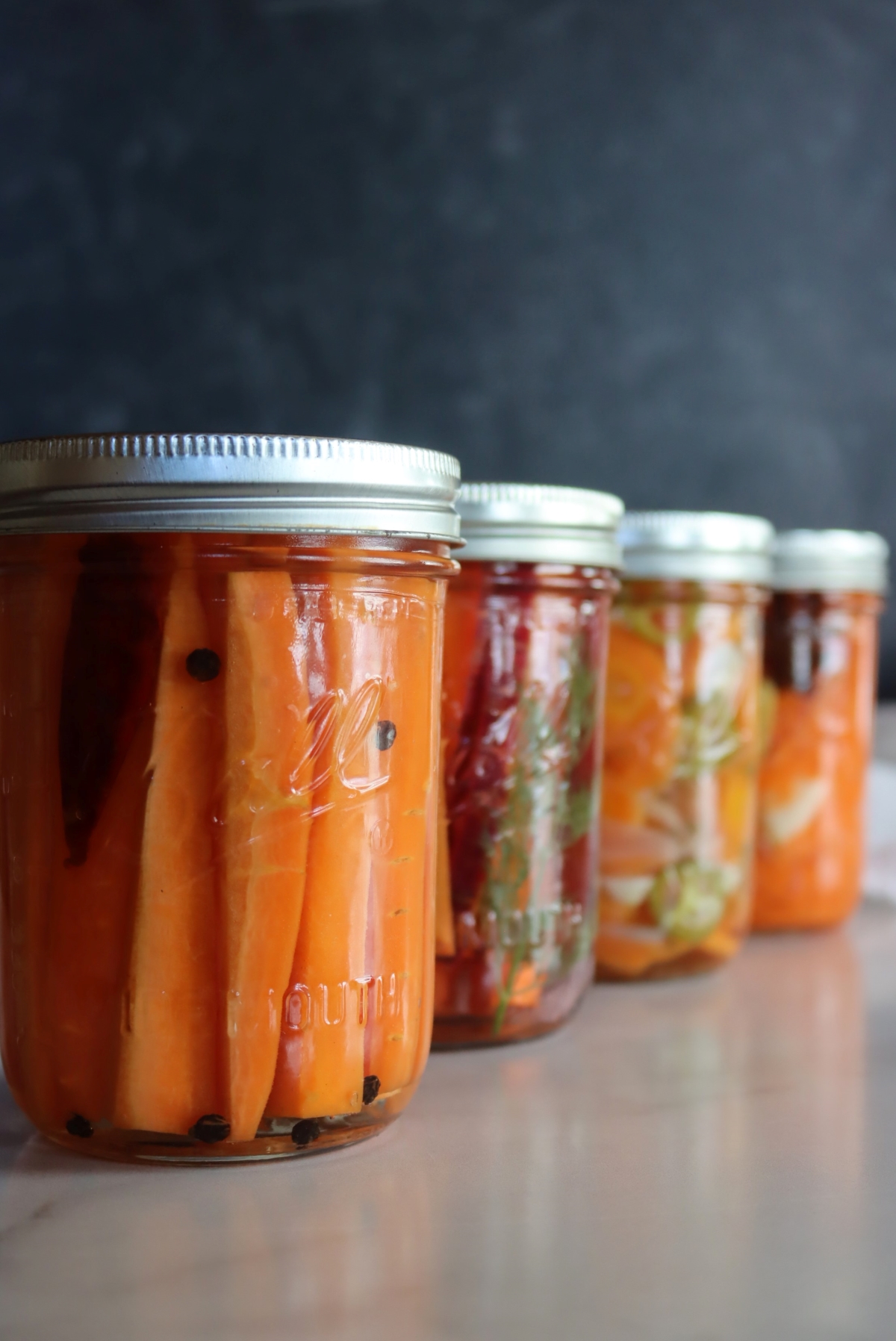
Cauliflower
Like cabbage, cauliflower is another one of those vegetables that you just cannot can plain. It doesn’t work, there’s no tested recipe for it, and even if there was, it’d taste nasty.
Skip the pressure canner and make cauliflower pickles instead!
They’re actually quite good, and cauliflower absorbs the flavor of pickling spices quite well. It maintains texture better than cucumbers, and really is all-around wonderful as a pickled vegetable.
It’s usually used in mixed pickled vegetables instead of by itself, but you can just make cauliflower pickles all on their own.
- Plain Pickled Cauliflower
- Curry Pickled Cauliflower
- Piccalilli (English Style Cauliflower, Onions, and Gherkins)
- Pickled Cauliflower with Red Carrots and Bell Pepper
- Giardiniera (Italian Pickled Vegetables)
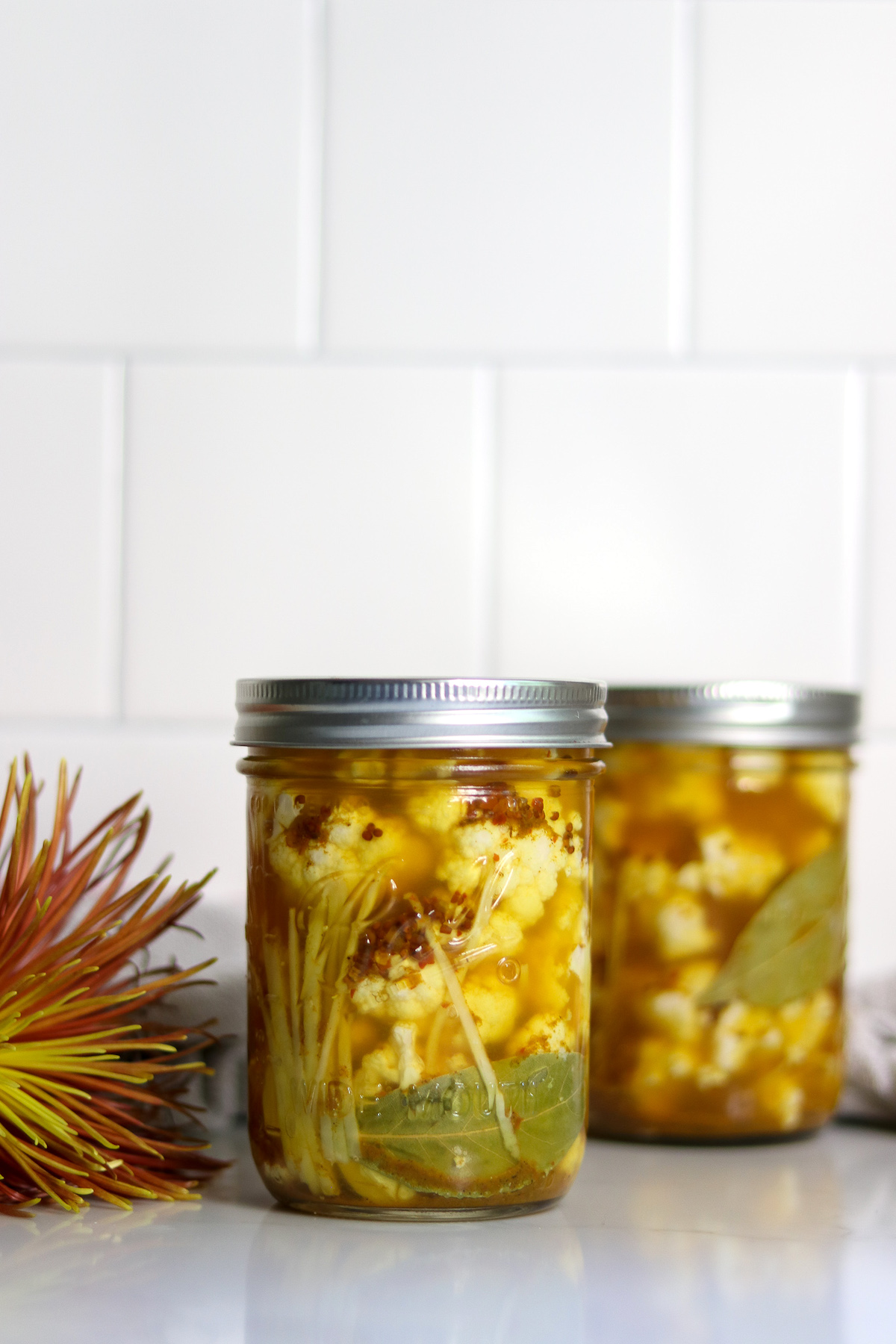
Celery
I’ll put it out there, I don’t think it’s a good idea to can celery. There are no approved pressure canning recipes for plain celery, and you can read about why here.
Like just about any vegetable, you can pickle it, but I can’t imagine it’s good? Maybe it’s a matter of taste.
Anyhow, I’d suggest dehydrating celery, as that works wonderfully. If you’re dead set on canning celery though, here’s one recipe to try:
Corn
Few things say summer vegetables like fresh corn! (Never mind that it’s technically a grain, I’m still including it.)
Pressure canning corn takes an incredible amount of time, but the results are usually quite delicious. Since it is technically a grain, it’s quite starchy, and must be held at pressure for 55 min (pints) and 85 minutes (quarts). That’s longer than just about any other vegetable canning recipe.
Beyond canning plain corn in the pressure canner, there are also plenty of water bath canned corn salsas and corn relish too. The addition of acid, either citrus juice or vinegar, lowers the pH and makes these recipes acceptable for water bath canning.
There’s even a safe, approved corn cob jelly recipe, and that one’s both unique and tasty!
- How to Can Corn (and Creamed Corn) – Pressure Canning Recipe
- Black Bean and Corn Salsa – Pressure Canning Recipe
- Grilled Corn Salsa – Water Bath Canning Recipe
- Sweet Corn Relish – Water Bath Canning Recipe
- Pickled Corn Salad – Water Bath Canning Recipe
- Corn Cob Jelly – Water Bath Canning Recipe
- Low Sugar Corn Cob Jelly – Water Bath Canning Recipe
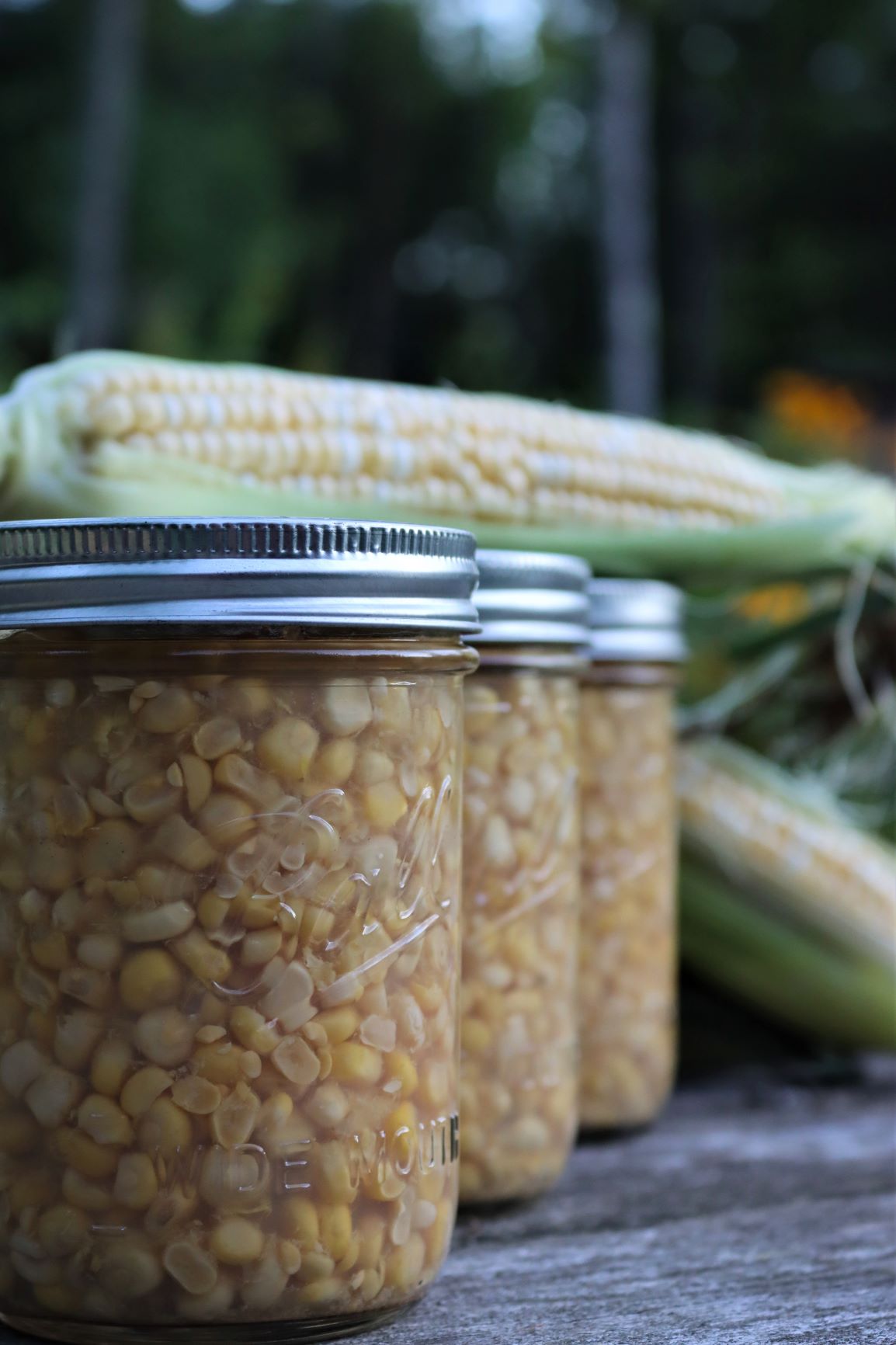
Cucumbers
Though there are no pressure canning recipes for cucumbers, there must be hundreds of ways to make cucumber pickles.
Bread and butter pickles are my favorite for hamburgers, but crisp dill pickles are hard to beat next to a summer sandwich.
Beyond pickles, you can also make a tasty jam using cucumbers, provided you add enough lemon juice or citric acid to make it safe for water bath canning. That’s a unique way to put a cucumber in a jar!
- Crisp Dill Pickles – Water Bath Canning Recipe
- Traditional Bread and Butter Pickles – Water Bath Canning Recipe
- Sweet Pickles – Water Bath Canning Recipe
- Spicy Garlic Dill Pickles – Water Bath Canning Recipe
- Sweet Dill Pickle Relish – Water Bath Canning Recipe
- Mini Sour Gherkins (Cornichons) – Water Bath Canning Recipe
- Cucumber Mint Jam – Water Bath Canning Recipe
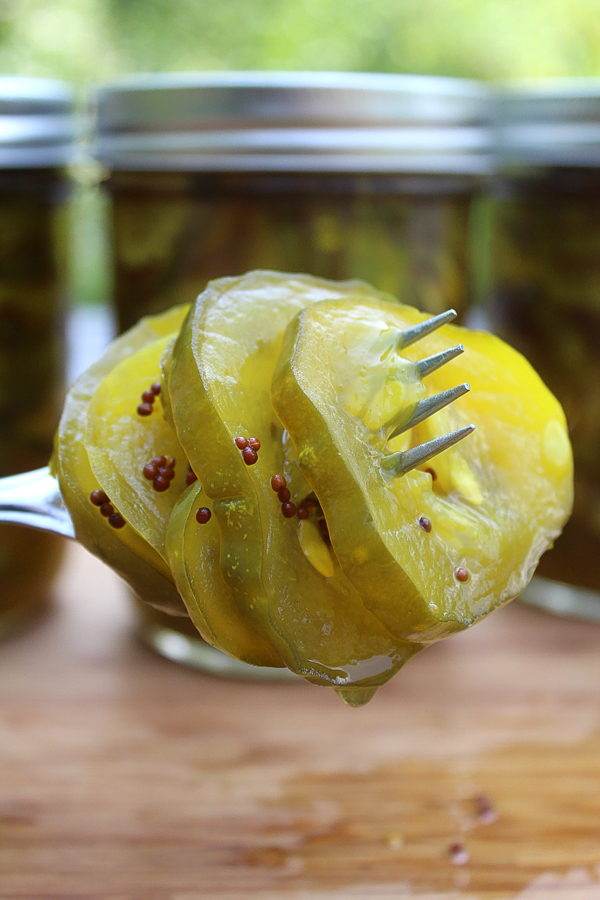
Eggplant
We grow and eat a lot of eggplant on our homestead. In the wintertime, I love making lamb and eggplant soup, baingan bharta (eggplant curry), and simple baba ganoush with homemade pita bread.
The problem is, eggplant is a summer vegetable, but they taste best in hearty winter cooking in my opinion. I was hoping to find simple pressure canning recipes for eggplant, but no luck. They’re not approved for pressure canning, sadly, and you can read about why here.
We’ll have to keep freezing (and dehydrating) eggplant for our winter recipes.
There are, however, plenty of water bath canning recipes for eggplant pickles or salsa. They’re not usually just pickled alone, but they do add interest when combined with other vegetables.
- Antipasto Pickles with Eggplant – Water Bath Canning Recipe
- Tomato and Eggplant Salsa – Water Bath Canning Recipe
Fiddleheads
One of those specialty vegetables you’ll only find at fancy markets, or out in the woods for spring foraging, fiddleheads are a real treat.
Since they’re pretty obscure, there’s not tested recipe for canning plain fiddleheads. I suspect that they’d be similar to asparagus for canning, but without a tested recipe, it’s impossible to know for sure.
That said, they can be pickled like just about any vegetable, and a side pickled fiddleheads really liven up a plate!
- Pickled Fiddleheads – Water Bath Canning Recipe
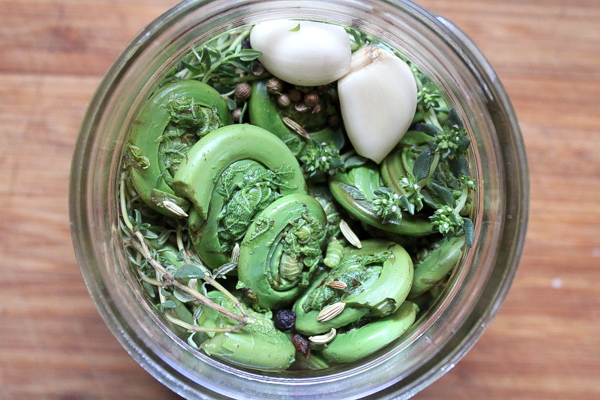
Garlic
There is no tested recipe for pressure canning garlic, largely because garlic loses its flavor with extended cook times at pressure. Since it doesn’t taste like much after a long pressure can, the national center for food preservation doesn’t recommend canning it that way and hasn’t tested it for safety.
You can read more about the safety of canning garlic here if you’re curious.
Pickled garlic is absolutely amazing though, and we make several varieties every year from our homegrown garlic.
Since we grow hard neck garlic varieties, we also harvest their flower shoots, and I’m always looking for new ways to use garlic scapes in the kitchen. Pickling is a logical choice for those too!
- Pickled Garlic (3 Ways) – Water Bath Canning
- Pickled Garlic Scapes – Water Bath Canning
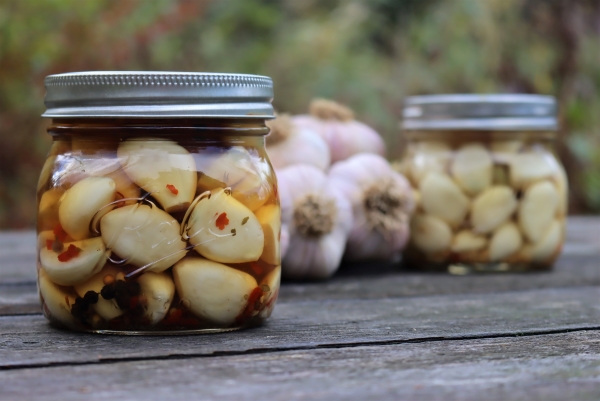
Green Beans
When green beans really get going in the summertime, it seems like there’s no stopping them. You can bring in armloads from just a few plants.
Canning plain green beans will allow you to put a green bean casserole on your holiday table, but it definitely requires a pressure canner. (Don’t listen to sources on the internet that claim you can water bath can plain green beans!)
Pickled dill beans, on the other hand, can be water bath canned. They hold their texture and shape beautifully, and I think they’re even better than a dill pickle on a plate beside a lunchtime sandwich.
- Pickled Dilly Beans – Water Bath Canning
- How to Can Green Beans – Pressure Canning
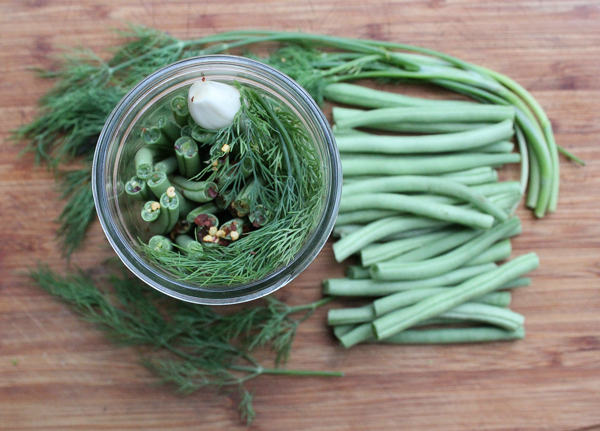
Greens (Spinach, Kale and Collards)
Believe it or not, it is possible to can greens at home.
The thing is, just because you can, doesn’t mean it’s a good idea. There are a few types of greens that can pretty well in my opinion, namely collard greens which are traditionally cooked for extended periods anyway.
Home-canned kale isn’t all that bad either, especially if you’re going to use it in a soup (like kale and white bean soup).
Pressure canned spinach is decent in dishes like saag paneer, where the spinach is well cooked anyway. Still, spinach doesn’t hold up as well as kale and collards.
- Canning Greens – Pressure Canning
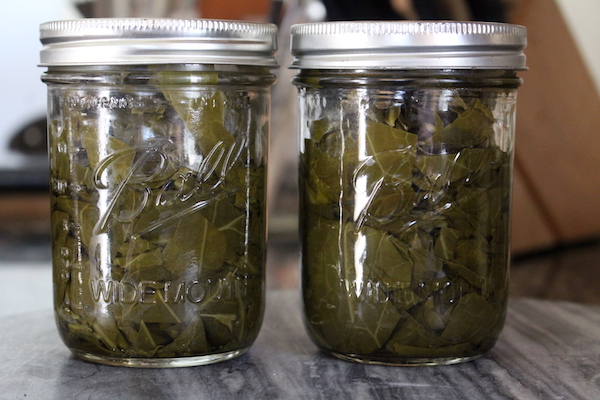
Onions
There is an approved/tested recipe for canning plain onions, but it’s rather specific. It relies on canning pearl onions, rather than onion slices, so it only works with very small whole onions.
Beyond canning plain onions, you can also put up savory onion jam, or my favorite, pickled onions!
- Caramelized Onion Jam with Balsamic – Water Bath Canning
- Pickled Onions – Water Bath Canning
- Canning Onions (and french onion soup) – Pressure Canning
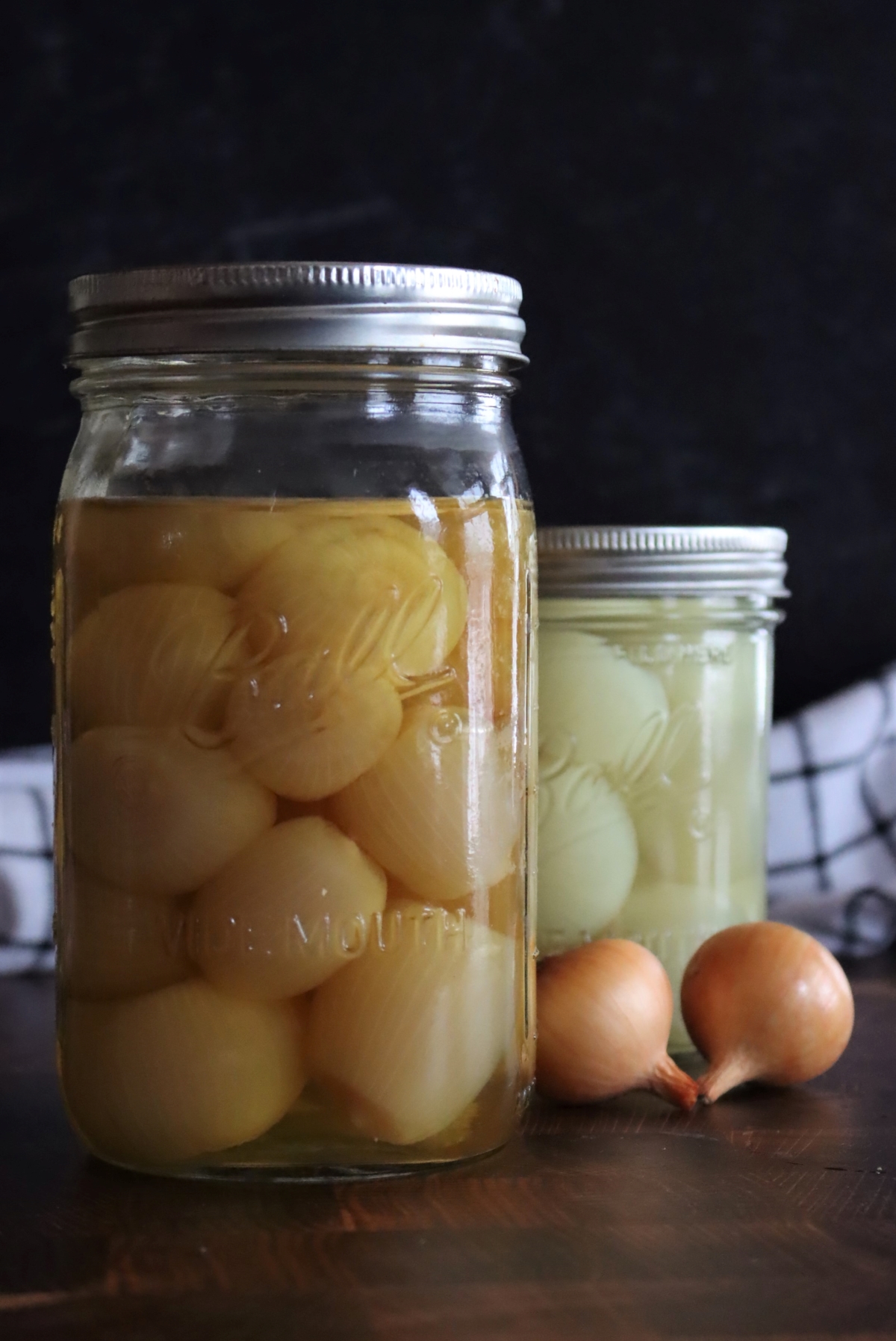
Parsnips
Though they store really well in a root cellar, not everyone has that option at home.
Canning parsnips is the second-best option in my opinion.
- Canning Parsnips – Pressure Canning
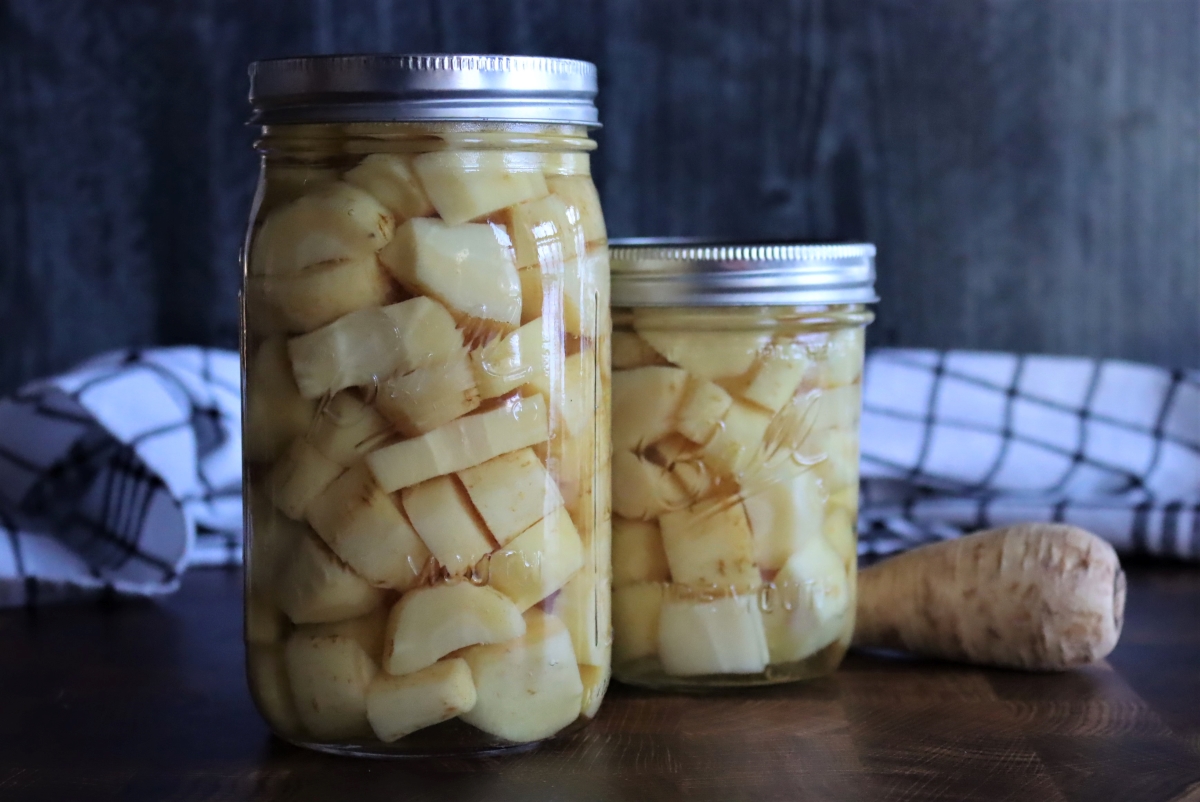
Peas
Home-canned peas are a labor of love, and require a lot of time spent shelling fresh garden peas before the canner even comes out.
Still, it’s time well spent in my opinion, and it reminds us to slow down and enjoy the summer breeze in a rocking chair…even when there are a thousand other things to do in early summer besides slowly rocking shelling peas.
- Canning Peas – Pressure Canning
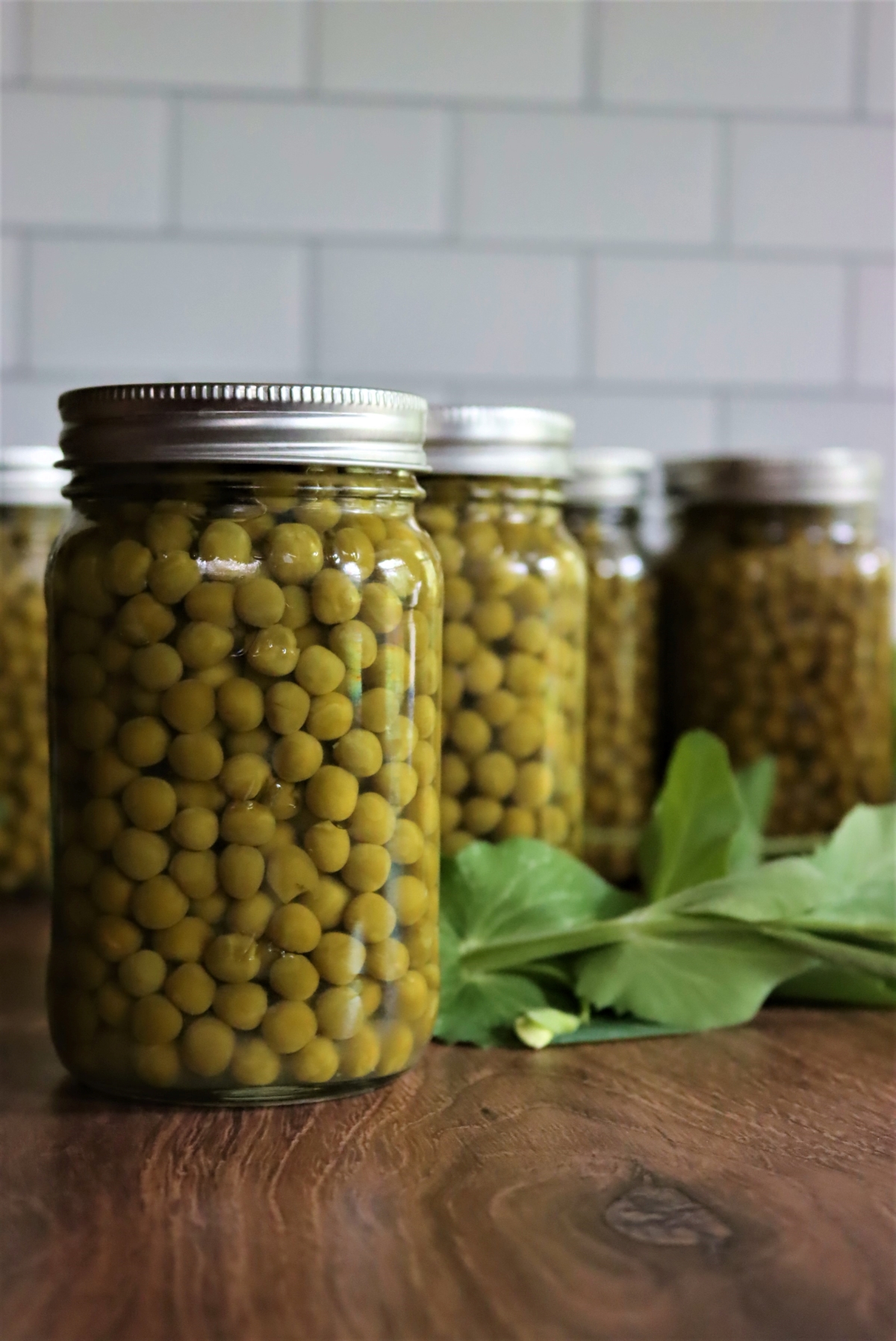
Peppers
Brightly colored summer peppers can up beautifully, both as pickled peppers and pressure canned plain peppers.
Plain peppers are great in wintertime cooking, and pickled peppers are wonderful on sandwiches and as a festive relish.
- Canning Peppers (Hot or Sweet) – Pressure Canning
- Canning Pickled Peppers – Water Bath Canning
- Cowboy Candy (Candied Jalapeños)
- Pickled Jalapeños
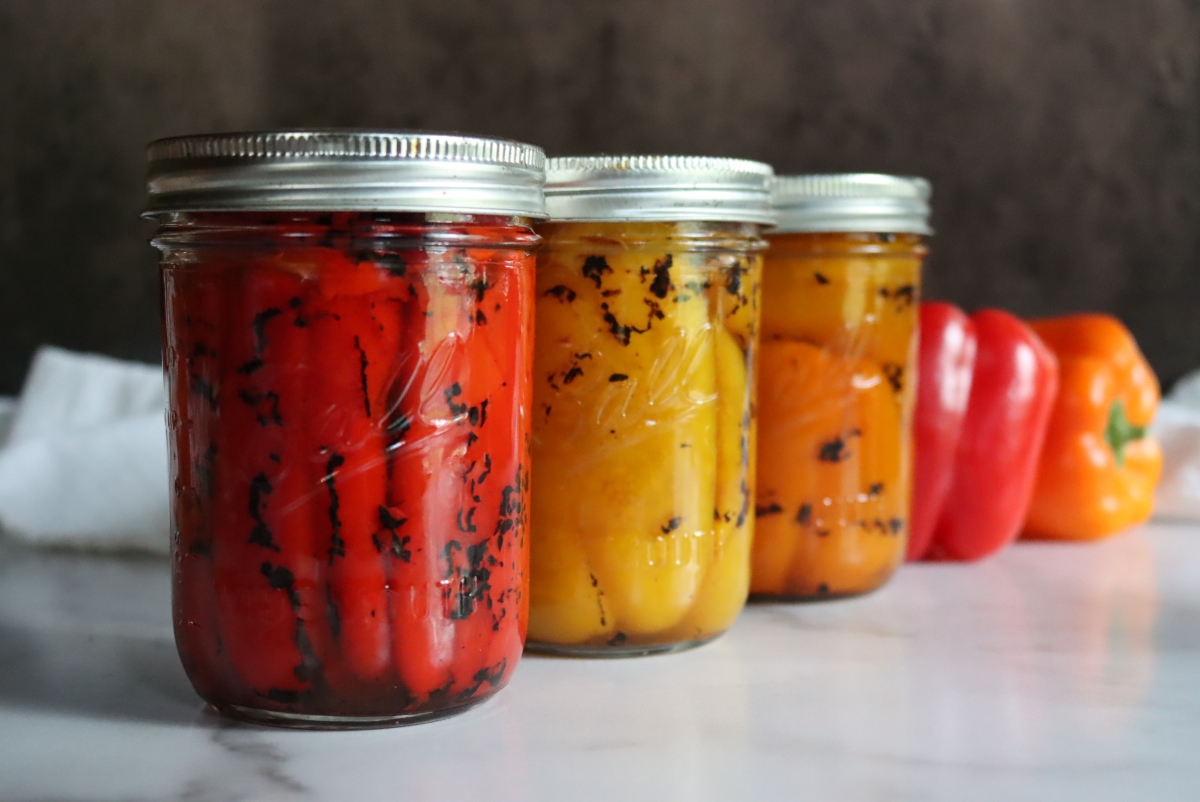
Potatoes
Small new potatoes just don’t store well, but they do can wonderfully.
Home-canned potatoes can be used right out of the jar to make your favorite dishes, from mashed potatoes to hash browns.
- Canning Potatoes – Pressure Canning
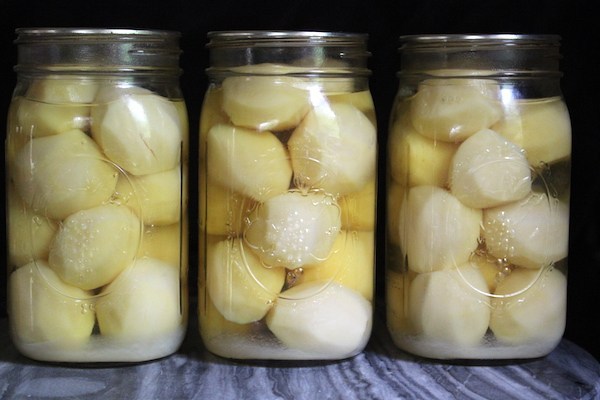
Pumpkin (and Winter Squash)
The process for canning pumpkins is tricky, and it’s important to follow very specific directions to ensure safety. Pureed pumpkin is too thick to allow for heat penetration to the center of the jars, so it must be canned in cubes.
Pumpkin cubes are actually more versatile anyway and work well in soups and curries. Of course, you can always mash them into a quick puree once you open the jars too.
- Canning Pumpkin – Pressure Canning
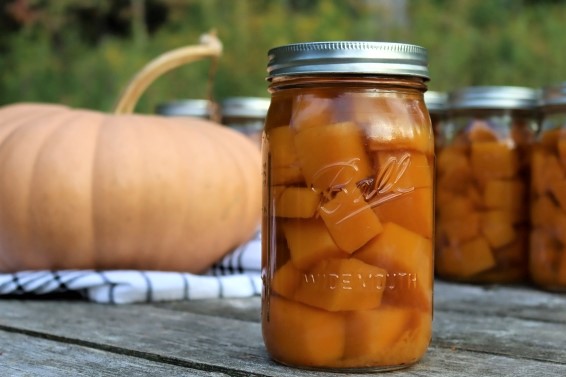
Ramps (Wild Leeks)
Also known as wild leeks, ramps are an extra special treat from the woods in the springtime.
They’re often available at farmer’s markets, or you can head out to your favorite patch and forage ramps yourself. They are great fresh and absolutely incredible pickled.
- Pickled Ramps– Water Bath Canning
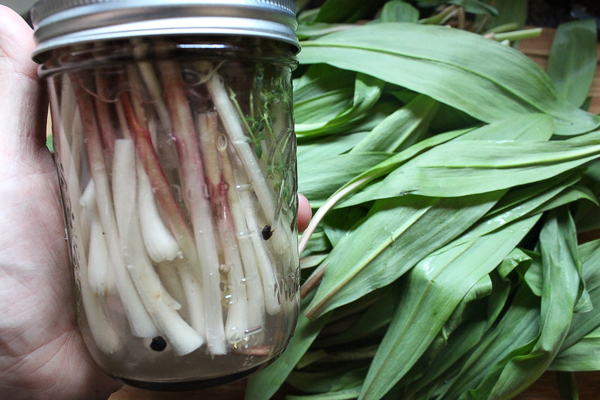
Rhubarb
Yes, believe it or not, rhubarb is a vegetable, though it’s usually treated as a fruit. I suppose if you want to get technical, tomatoes are a fruit too, and corn is a grain…but that’s not the point.
Rhubarb happens to be naturally acidic enough for canning, which means you can put up plain stewed rhubarb in a jar in a water bath canner. You can also make it into jam, chutney, bbq sauce, and just about anything else for water bath canning.
- Canning Rhubarb – Water Bath Canning
- Rhubarb Jam– Water Bath Canning
- Strawberry Rhubarb Jam– Water Bath Canning
- Rhubarb Jelly– Water Bath Canning
- Rhubarb and Gin Jam– Water Bath Canning
- Rhubarb Orange Chutney– Water Bath Canning
- Rhubarb BBQ Sauce– Water Bath Canning
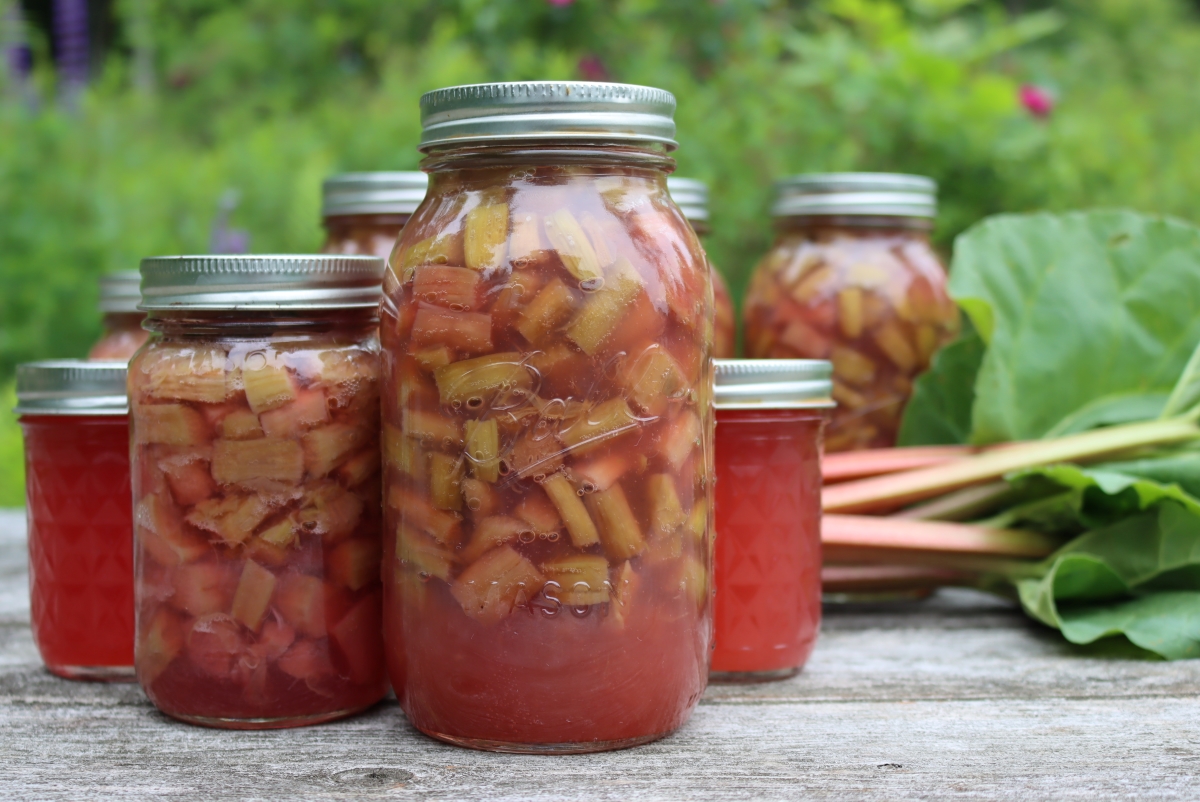
Sweet Potato
Home-canned sweet potatoes save a lot of time around the holidays, and they still bake up beautifully into sweet potato pie and casseroles. They also work well eaten right out of the jar with a fork!
Sweet potatoes hold their shape and texture surprisingly well through the canning process and are still firm after months of storage.
- How to Can Sweet Potatoes – Pressure Canning
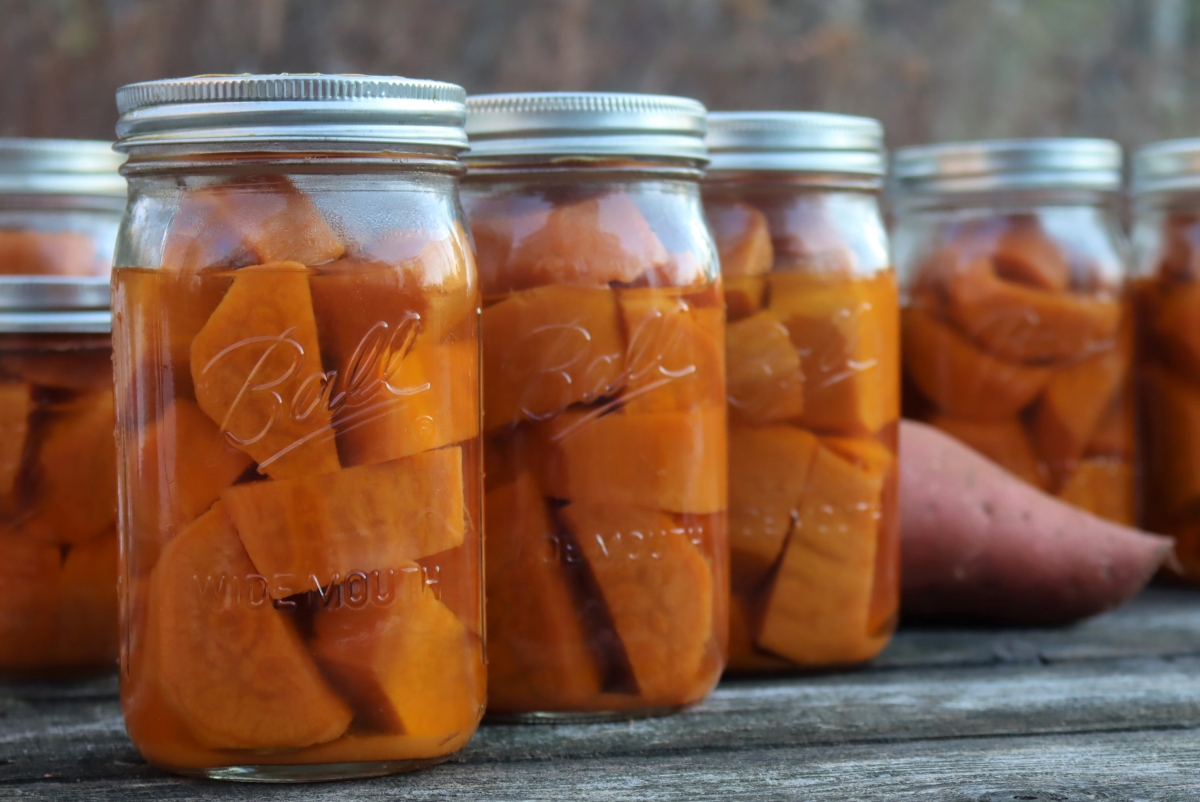
Tomatillo
Another rare acidic vegetable, the natural pH of tomatillos is low enough to be safe for water bath canning. (At least, according to some studies.)
While in theory they could be put up whole in plain water without a pressure canner, the national center for food preservation still recommends adding acidity to the canning liquid, as you would do in tomato canning recipes.
Variations in growing conditions can impact the pH of tomatillos, and you’re better safe than sorry. I find that lime juice actually really compliments their flavor anyway.
By adding 1 tablespoon of bottled citrus juice to each pint (or 2 tablespoons per quart), you can safely can tomatillos using a water bath canner.
Be aware that if you want to make them into salsa with peppers and onions, you’ll need to add quite a bit of citrus juice or vinegar to bring the whole mix down into a safe pH range.
- Canning Whole Tomatillos – Water Bath Canning
- Tomatillo Sauce (Green Sauce) – Water Bath Canning
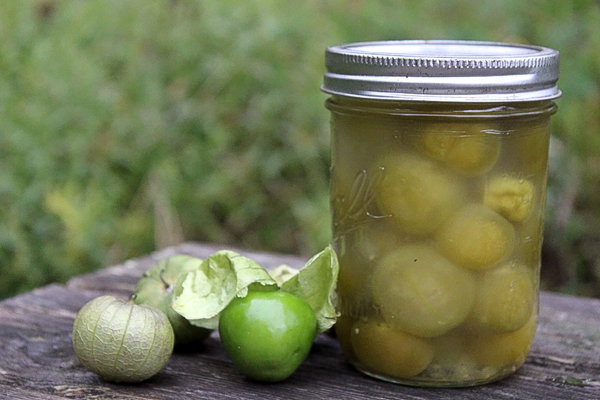
Tomatoes
While they may seem acidic, believe it or not, tomatoes are right on the line for safe water bath canning. There’s a lot of variation in tomato varieties, and many modern varieties are not acidic enough for canning.
Beyond that, environmental conditions (sunlight, water, fertilizer, etc) can impact the acidity of tomatoes as well.
Safe tomato canning recipes always include added acidity, either lemon juice or vinegar. That’s true whether you’re water bath or pressure canning because all the pressure canning instructions were developed using added acidity.
There are no tested recipes (currently) for pressure canning tomatoes without added acidity, so you need to add acidity either regardless of the canning method you choose.
- Canning Whole Tomatoes – Water Bath or Pressure Canning
- Canning Diced or Crushed Tomatoes– Water Bath or Pressure Canning
- Canning Tomato Sauce– Water Bath or Pressure Canning
- Canning Tomato Paste– Water Bath or Pressure Canning
- Pickled Cherry Tomatoes – Water Bath Canning
- Pickled Green Tomatoes– Water Bath Canning
- Green Tomato Relish (Chow Chow)– Water Bath Canning
- Sweet and Savory Tomato Chutney– Water Bath Canning
- Tomato Salsa with Fresh Peppers– Water Bath Canning
- Restaurant Style Salsa– Water Bath Canning
- Smokey Spiced Tomato Jam– Water Bath Canning
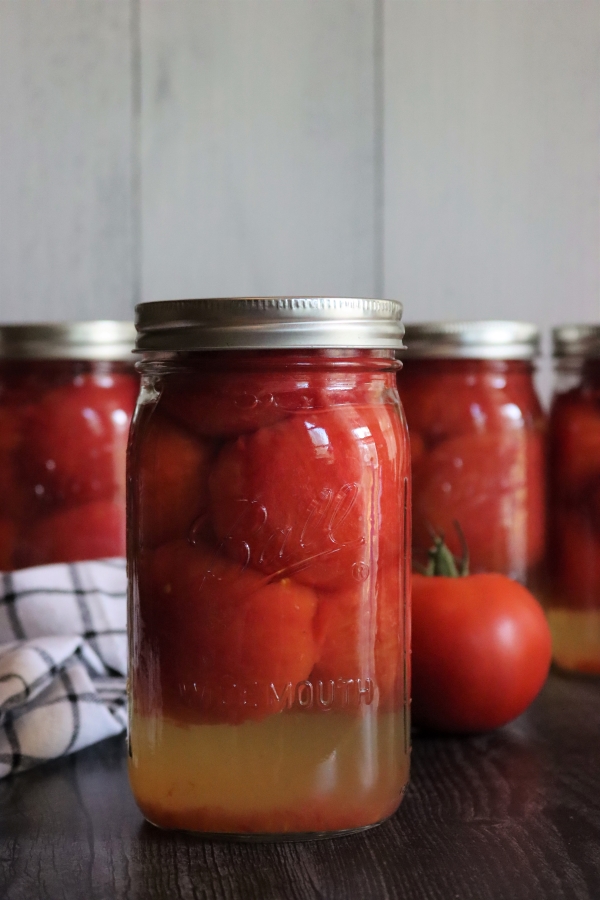
Turnips
While they’re generally stored in a root cellar, you can also can turnips for long-term storage.
The instructions and process are very similar to canning parsnips.
Zucchini
Most zucchini canning recipes are actually pickles, relish, and jam. Yes, believe it or not, you can make zucchini into jam.
These acidified recipes are approved for water bath canning.
Unfortunately, you cannot can plain zucchini in water in the pressure canner. Zucchini falls apart and turns into a paste in the jar, leading to an unappealing mush.
Ignoring the fact that it’d be unappealing, it’s just not safe. Zucchini just won’t stay in chunks to allow for even heat penetration into the jar.
There is one safe tested pressure canning recipe for zucchini, and it mixes zucchini with tomato chunks. The tomato chunks keep the zucchini from matting together in the jar and also help add acidity to reduce the pressure canning time.
The resulting mix is great for pasta sauce and soups.
- Pineapple Zucchini Chunks – Water Bath Canning
- Zucchini Relish – Water Bath Canning
- Sweet and Sour Zucchini Pickles – Water Bath Canning
- Zucchini Marmalade – Water Bath Canning
- Zucchini with Tomatoes – Pressure Canning
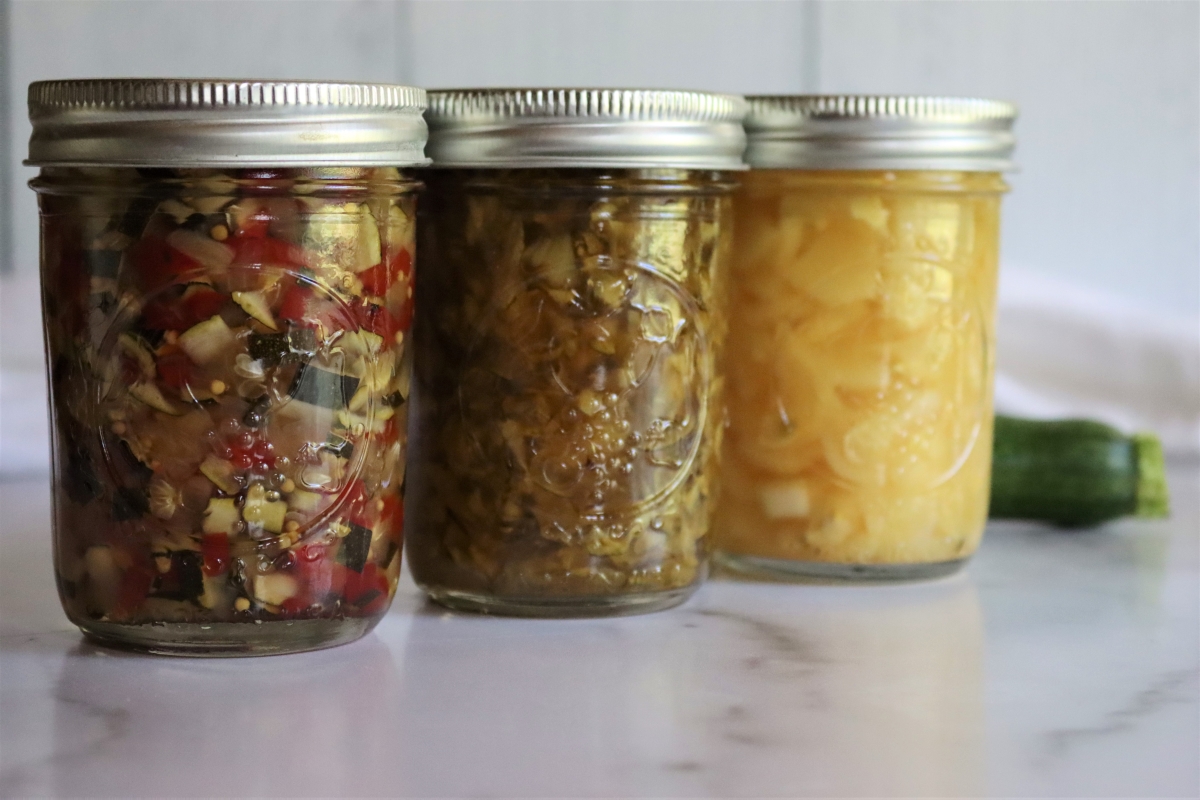
Canning Recipes
Looking for more canning recipes to fill your pantry? I have literally hundreds….
- 100+ Canning Recipes from A to Z
- 50+ Pressure Canning Recipes
- 30+ Strawberry Canning Recipes
- 12+ Apple Canning Recipes
- How to Make Jam (With 30+ Recipes)
Food Preservation Tutorials
Canning food at home is just the beginning…
- How to Make Apple Cider Vinegar
- Beginners Guide to Cheesemaking
- Beginners Guide to Lacto-Fermentation
- How to Make Mead (Honey Wine)
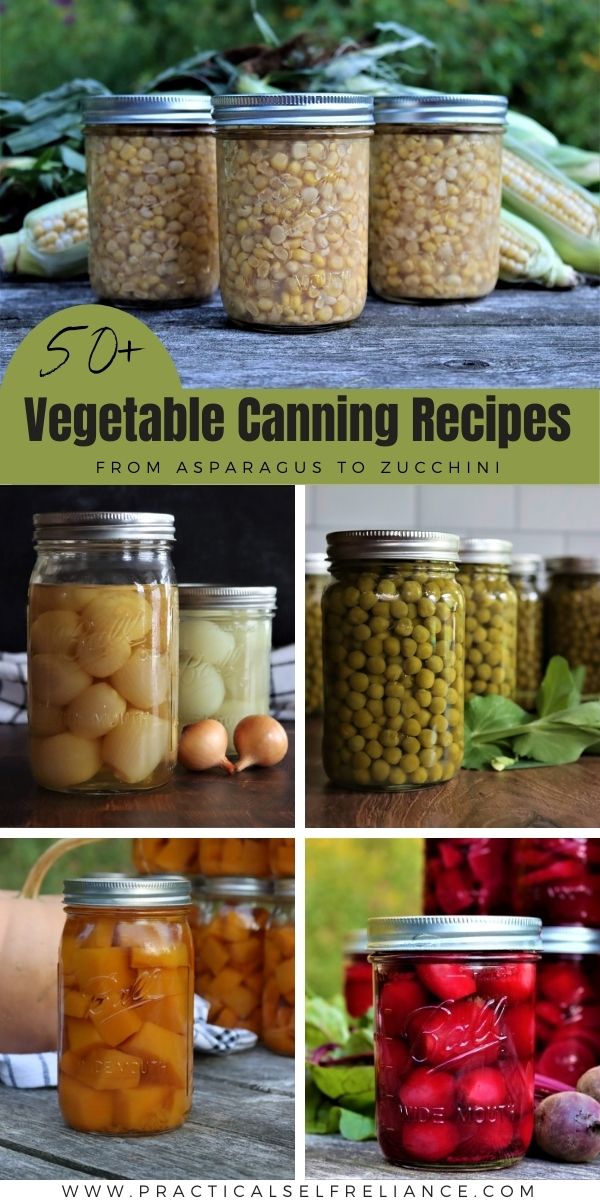
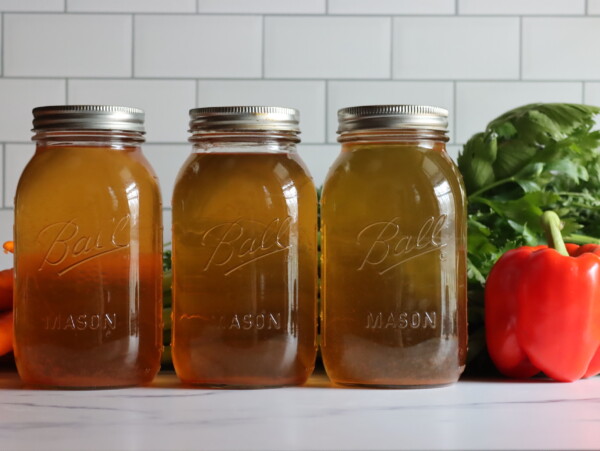
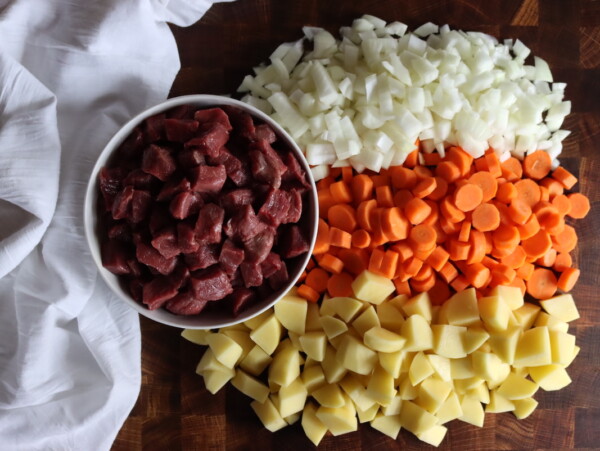
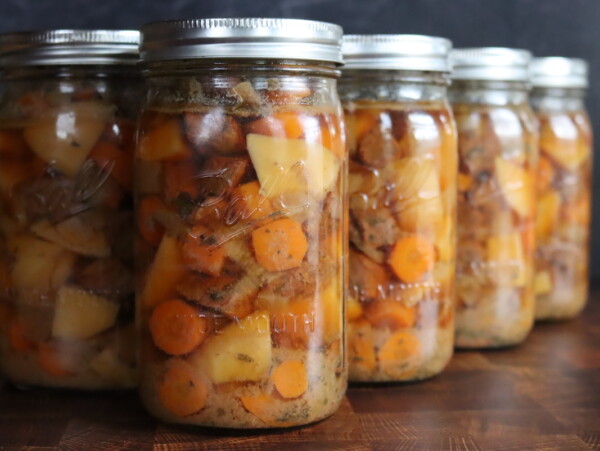
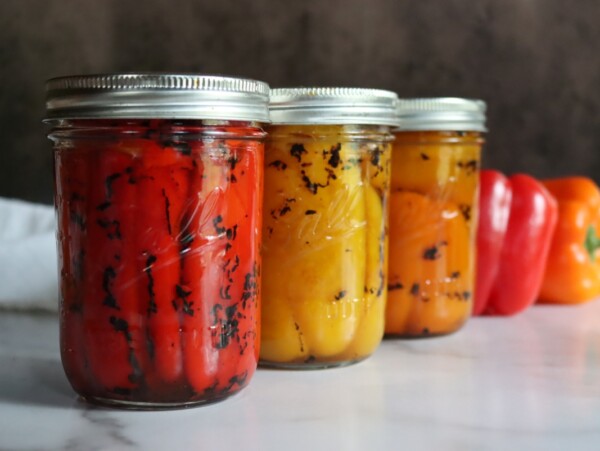










Thank you!!
You’re quite welcome!
First of all, THANK YOU for all the information you’ve shared here. This is a wealth of data. But, is this information shared in a central place, i.e., a book or searchable files, etc. I’m a relative novice to the world of canning but I’m definitely no stranger to pressure cookers and such. What I’m specifically looking for is a wealth like you’ve prepared but maybe has a list that says CARROTS Pressure at: 5 pounds for 40 minutes. No offense to you at all and I’m sure that information is here at this website, but it isn’t easy to find. Any suggestions or ideas you might have? Thank you again! You are definitelyl my GO TO person.
I’m sorry but unfortunately there isn’t anything available like that here on the blog but I do know of a great book that might be what you’re looking for. It’s called Everything Worth Preserving by Melissa Norris.
Fantastic! THis is really helpful, thanks!
You’re quite welcome! (And I love your site Christina!)
Thank you for your posts! I love your recipes. I can’t seem to find a canning recipe for brussels sprouts. Do you have one? Thanks so much😊
Most recipes that I have seen for canning brussel sprouts are for pickled brussel sprouts. You can check out the National Center for Home Food Preservation for recipes.